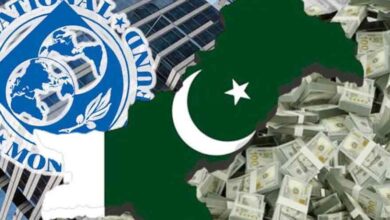KARACHI: Amid ongoing efforts by the incumbent government to improve the economic indicators, the country’s debt-to-GDP ratio has dropped to 65.7% marking its lowest level since June 2018, it was reported on Tuesday.
As per Arif Habib Limited, the domestic debt-to-GDP ratio stood at 43.1%, while the external debt-to-GDP ratio was recorded at 22.7%.
The data released by the State Bank of Pakistan (SBP) shows that the government’s debt has witnessed a drop of Rs792 billion or 1% month-on-month in September, underscoring the government’s reduced financing needs resulting from the budget surplus, record-high central bank profits, and prudent expense management.
The government’s total debt stock fell to Rs69.57 trillion by the end of September 2024, down from Rs70.362 trillion at the end of August 2024.
However, the debt increased by Rs656 billion in the first quarter of the current fiscal year. As of June 30, 2024, the debt stood at Rs68.914 trillion.
The latest debt figures come amid the ongoing talks between Pakistan and the International Monetary Fund (IMF) with the latter’s team in Islamabad to evaluate the country’s progress on the $7 billion loan programme.
The primary agenda of the IMF team is to assess Pakistan’s external financing gap and the measures being taken to address the shortfall in tax collection.
Furthermore, the SBP data reveals that the government’s domestic debt rose to Rs47.536 trillion in the first quarter of FY25, an increase from Rs47.16 trillion at the end of the last fiscal year.
However, on a month-on-month basis, the domestic debt declined and was recorded at Rs48.339 trillion at the end of August.
Additionally, the government’s external debt increased to Rs22.034 trillion during the July-September FY25 period, compared to Rs21.754 trillion at the end of June. At the end of August 2024, the external debt stood at Rs22.023 trillion.
“Government debt has increased at its slowest pace in the first quarter since the first quarter of the fiscal year 2022. This deceleration in debt growth is attributed to the government’s first fiscal surplus in 20 years, recorded in the first quarter of this fiscal year,” said AKD Securities Limited Director Research Awais Ashraf.
“The government reported a record primary surplus of Rs3 trillion and a fiscal surplus of Rs1.7 trillion for the first quarter,” he added.
“This positive outcome was driven by a historic Rs2.5 trillion in dividends received from the State Bank of Pakistan and a significant 26% increase in tax revenue collected by the Federal Board of Revenue (FBR) along with prudent management on the expenses front,” Ashraf noted.
Meanwhile, Ismail Iqbal Securities head of research Saad Hanif is of the view that central government debt rose from Rs62.3 trillion in September 2023 to Rs69.6 trillion in September 2024, with a focus on long-term debt.
“While domestic borrowing increased, the government favoured long-term debt, actively buying back Treasury bills and extending short-term debt into longer maturities.
“External debt remained stable with minor increases, and a slightly stronger Pakistani rupee softened its impact in rupee terms. This shift toward long-term debt could provide more stability and reduce refinancing risks, although overall debt levels continue to rise,” he said.
Additionally, SBP statistics show that Pakistan’s debt and liabilities increased to Rs85.836 trillion in the July-September FY25 period. This is up from Rs78.419 trillion during the same period last year.






